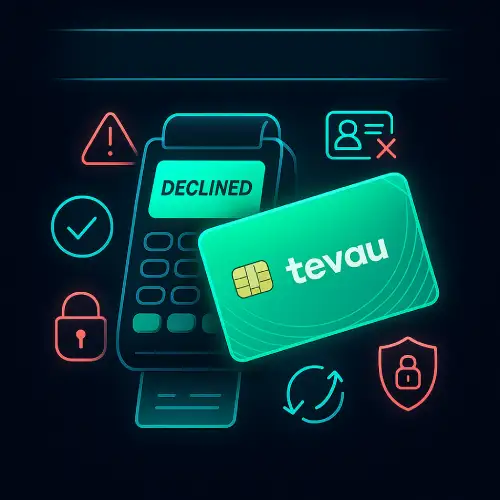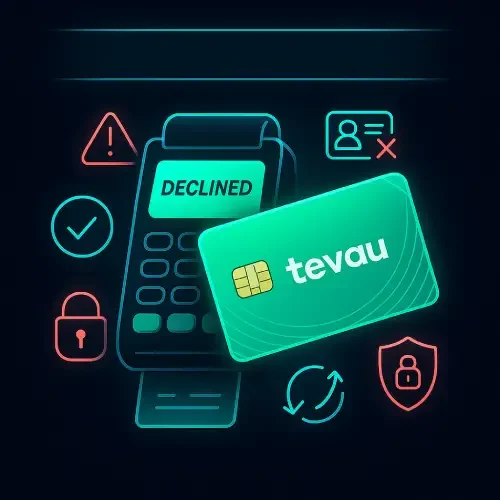Tevau Card Declined Guide
What to Do If Your Tevau Card Is Declined
Facing a decline at the payment terminal with your Tevau Card can be frustrating—especially when you’re abroad or on the go. But rest assured, most declines are caused by fixable issues. Here’s a transparent, step‑by‑step guide on how to diagnose and resolve the problem—get back to spending your crypto without worry.

Check Your Balance & Top‑Up
First things first: ensure your wallet or card linked to Tevau has sufficient funds. If you’re using a crypto pre‑top‑up card (e.g., funded with USDT), confirm that the top‑up was credited and that the conversion to fiat was completed. Open the Tevau app, go to Wallet > Cards, and verify your available balance and recent transactions. Top‑up delays or network congestion on the crypto side may cause a balance mismatch, triggering a decline.
Verify the Correct Network & Currency
If you topped up in crypto and a conversion to fiat was needed, double‑check that the supported network was used (for example TRC‑20, BEP‑20, or Arbitrium ). Sending USDT on the wrong chain could delay or lose funds entirely. Also confirm you’re spending in the card’s supported fiat currency (if the card is USD‑based, spending in other currencies may trigger declines or extra checks).
Look for Merchant Category Code (MCC) Restrictions
Transaction declines can happen even when you have sufficient funds if the merchant’s category code (MCC) is blocked or restricted by the issuer’s fraud monitoring system. Some high‑risk businesses (gaming, adult, certain online services) may be automatically declined. If you suspect this is the cause, try a different merchant type like retail or dining, or contact Tevau support to verify if your MCC is flagged.
Consider Location, ATM & Foreign Exchange Factors
Declines often occur at ATMs or in foreign countries if the card region is restricted, if ATM withdrawals exceed the monthly limit, or if the terminal expects a different currency. For example, if your Tevau card is a USD‑denominated card and you attempt a local currency transaction without switching to “local currency” mode, it might be declined. Make sure your card is enabled for international use and check withdrawal spending limits in the app.
Use the In‑App Card Controls & Support
Tevau’s app includes built‑in controls for abuse prevention: you can turn your card off/on, view real‑time transactions, and receive instant alerts. If you receive a decline, open the app and verify whether your card is toggled on, whether recent transactions show suspicious patterns, or whether you triggered a temporary block. Then contact Tevau support via chat or email with your transaction ID, date/time, and location—most support teams respond within minutes.
Prevent Future Declines — Smart Best Practices
• Always carry a backup payment method in case of unexpected issues.
• Before major travel or big spend, top‑up early and test a small transaction.
• Enable alerts and push notifications to receive instant decline alerts.
• Regularly review your transaction thresholds and monthly limits in the app.
• Update your app and card firmware to ensure compatibility with NFC and global terminals.
Conclusion
A decline on your Tevau Card is rarely permanent or irreversible. Most issues stem from simple oversights like insufficient balance, wrong network, or merchant restrictions. By following the steps above—check your balance, confirm network and currency, monitor MCC and location rules, and use the in‑app controls—you’ll be back to a smooth crypto spending experience in no time.









